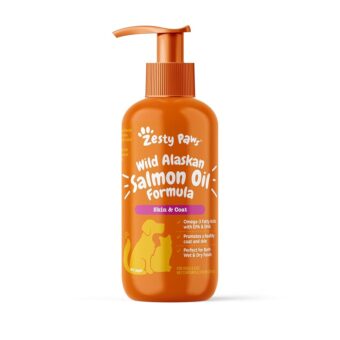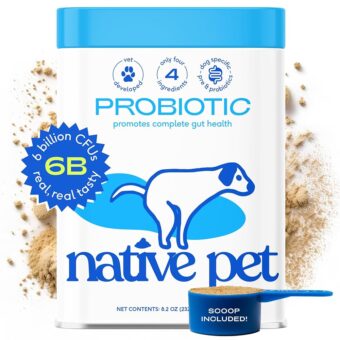
Understanding Dog Nutritional Needs
Understanding the basic nutritional needs of dogs is fundamental in ensuring their overall health and well-being. A balanced diet should consist of proteins, fats, carbohydrates, vitamins, and minerals, each serving a unique purpose in a dog’s growth and development. Proteins are crucial for building and repairing tissues, supporting immune function, and facilitating enzyme production. The type of protein source, such as animal or plant-based, can affect bioavailability and overall digestibility, with animal proteins generally providing higher quality amino acids.
Fats are another essential component of a dog’s diet, providing a concentrated energy source and aiding in the absorption of fat-soluble vitamins. Omega-3 and Omega-6 fatty acids, in particular, play significant roles in maintaining skin health and enhancing the immune response. However, the precise fat content should be adjusted based on a dog’s age, breed, and activity level to prevent obesity and related health issues.
Carbohydrates are often included in commercial dog food as they offer a source of energy and assist in digestive health through dietary fiber. While dogs are primarily carnivores, carbohydrates can be beneficial if derived from quality sources such as sweet potatoes, brown rice, or whole grains. Vitamins and minerals must not be overlooked, as these micronutrients are vital for various biological functions, including growth, development, and the maintenance of metabolic processes.
Moreover, dietary requirements can vary significantly based on several factors, including breed, size, age, and health status. Puppies, for instance, have different nutritional needs compared to adult dogs, necessitating formula adjustments in their food to support their rapid growth. Similarly, senior dogs may require specialized diets that are lower in calories and formulated to support joint health. This intricate relationship underscores the importance of selecting the right food for each dog, emphasizing the need for personalized nutritional planning to promote long-term health and vitality.
Factors to Consider: Breed Size and Activity Level
When selecting the right food for your dog, two critical factors to consider are breed size and activity level. Each breed falls into a category based on its size: toy, small, medium, large, and giant. These classifications significantly affect nutritional requirements as well as caloric intake. Understanding the specific needs associated with each size category can help pet owners make informed decisions about their dog’s diet.
Toy breeds, typically weighing up to 10 pounds, have fast metabolisms and therefore require calorically dense food to meet their energy needs. Options that deliver high-quality protein and healthy fats are essential for maintaining their energy levels. Small breeds, ranging from 10 to 25 pounds, also exhibit high activity levels and often require special formulations that focus on their growth and energy burst periods. Nutritional content for small breeds should include adequate carbohydrates to support sustained play and exercise.
Medium breeds, which typically weigh between 25 to 50 pounds, tend to fall in the middle concerning energy expenditure. They benefit from a balanced diet that includes protein, fats, and carbohydrates to maintain their healthy weight. Larger breeds, usually weighing between 50 to 90 pounds, require a diet designed to support their muscle mass and bone health. Their food should contain a moderate amount of protein, as well as controlled fat levels to avoid obesity.
Finally, giant breeds, exceeding 90 pounds, have distinct dietary needs to prevent growth-related problems. Their food should have lower calories per cup but still provide the necessary nutrients like omega fatty acids for joint health. It’s essential to align their diet with their activity levels, prioritizing low-calorie options for less active dogs and higher-quality nutrition for those that are more active. Proper dietary choices based on breed size and activity level can substantially enhance the health and well-being of dogs.
Age Matters: Puppy, Adult, and Senior Nutritional Needs
Understanding a dog’s nutritional requirements is essential for promoting optimal health throughout its life stages: puppy, adult, and senior. Each age group has unique needs that reflect their physical development, energy levels, and overall health. For instance, puppies require a diet rich in protein and fat to support their rapid growth and high energy demands. It is vital for puppy food to contain the right balance of essential nutrients, including DHA for brain development and calcium for bone health. Puppy formula typically boasts elevated levels of these components to facilitate proper growth.
As dogs mature into adulthood, their nutritional requirements shift. Adult dogs generally need a balanced diet that maintains their energy levels without encouraging excessive weight gain. During this phase, the focus is on providing quality protein sources, healthy fats, and fiber-rich carbohydrates. Such a diet would support muscle maintenance, energy needs, and proper digestion. Additionally, adult dogs benefit from a mix of vitamins and minerals that support immune function and overall well-being.
Senior dogs, on the other hand, face different challenges as they age. Their metabolism tends to slow down, which may lead to weight gain if their diet is not properly adjusted. Therefore, senior dog food should be lower in calories but enriched with antioxidants to combat aging. Adequate joint support is also crucial, as many older dogs experience mobility issues. Nutrients such as omega fatty acids, glucosamine, and chondroitin should be incorporated into their diets to promote joint health and reduce inflammation.
Ultimately, understanding these age-related dietary needs enables pet owners to make informed decisions about their dog’s nutrition, contributing to better health outcomes across all life stages.
Identifying Quality Dog Food: What to Look For
When selecting high-quality dog food, the first step involves examining the ingredient label. A top-tier dog food product will typically include named meat sources, such as chicken, beef, or fish, as the primary ingredient. Ingredients should be listed in descending order by weight, so it is essential to ensure that a high-quality protein source appears first. Additionally, look for whole grains, vegetables, and fruits that provide vital nutrients, rather than fillers such as corn or soy, which offer little nutritional value.
Veterinary recommendations are another crucial aspect to consider when choosing the right dog food. Consulting with a veterinarian can help identify your dog’s specific dietary needs based on their age, breed, and health conditions. Vets can provide valuable insights into nutritional requirements, helping you select a balanced diet that promotes overall health. Many dog food brands also have veterinary endorsements, which can assist in distinguishing high-quality products from those that might not meet essential dietary standards.
Understanding the differences between commercial, raw, and homemade diets is equally important. Commercial diets, usually kibble or canned, are often formulated to meet regulatory standards for nutrition. Raw diets, while gaining popularity, require careful handling and preparation to avoid potential health risks. On the other hand, homemade diets allow owners to control ingredients but necessitate careful planning to ensure they meet nutritional requirements.
Harmful additives and fillers should be avoided when selecting dog food. Ingredients such as artificial preservatives, colors, and flavors can be detrimental to a dog’s health. It is advisable to opt for brands that utilize natural preservatives like tocopherols or ascorbic acid. By focusing on quality ingredients and seeking professional recommendations, owners can ensure that their dogs receive the best nutrition possible.
Dietary Restrictions and Allergies: Customizing Your Dog’s Diet
Understanding dietary restrictions and allergies in dogs is essential for maintaining their health and well-being. Dogs can experience food intolerances and allergies that may lead to various health issues. Common allergens include grains, certain proteins, and artificial additives. Recognizing the signs of food allergies is crucial for a timely intervention. Symptoms may manifest as skin irritations, gastrointestinal distress, or frequent ear infections. If you observe your dog exhibiting any of these symptoms after a meal, it could indicate a potential intolerance or allergy to specific ingredients.
When customizing a diet for your dog, it is important to consider breed, age, and overall health. For example, certain breeds are more predisposed to specific allergies. Golden Retrievers and Labrador Retrievers are known to be prone to skin allergies, while other breeds may be sensitive to particular proteins such as chicken or beef. Conducting a transition to a new diet should be gradual to minimize digestive upset. Begin by mixing small amounts of the new food with the current food, gradually increasing the proportion of the new diet over several days.
Opting for hypoallergenic dog food can be beneficial for dogs with known sensitivities. These specialized diets typically feature novel protein sources—such as duck or venison—and limited ingredient formulations to avoid common allergens. Additionally, grain-free options are available for dogs that may react negatively to grains like wheat or corn. Consulting with a veterinarian is highly recommended, as they can assist in identifying potential allergens through elimination diets or allergy testing.
Through careful observation and tailored dietary choices, pet owners can effectively manage their dog’s allergies and dietary restrictions. This customized approach not only promotes better health but also enhances the quality of life for your beloved companion.
Consulting Your Veterinarian: Professional Guidance
When it comes to selecting the right food for your dog, seeking the expertise of a veterinarian is crucial. Veterinarians possess extensive knowledge of canine nutrition and can offer personalized guidance tailored to your dog’s unique health profile, breed, and age. They are trained to assess various factors such as weight, activity level, and any existing health conditions, which can significantly influence dietary choices.
For instance, puppies have different nutritional needs compared to adult and senior dogs. A veterinarian can help you choose food that promotes healthy growth in puppies while providing balanced nutrition for older dogs to maintain their health. Furthermore, dogs with specific medical conditions, such as diabetes, allergies, or kidney disease, may require specialized diets or particular food formulations. Through a thorough examination, your veterinarian can identify these needs and suggest appropriate dietary options that ensure your pet receives optimal nutrition.
In addition to evaluating health status, veterinarians are also familiar with various dog food brands and formulations available in the market. They can recommend high-quality products that meet industry standards and align with your dog’s dietary requirements. Their professional perspective is invaluable, as they can filter out commercial marketing claims and help you make informed choices based on scientific evidence and trusted sources.
Moreover, routine consultations with your veterinarian allow for ongoing assessment of your dog’s dietary needs. As dogs age or if their health condition changes, dietary requirements may shift, necessitating adjustments to their food. Your veterinarian can monitor these changes and recommend suitable modifications to adapt your dog’s diet accordingly. This guidance is essential to ensure your dog remains healthy, happy, and well-nourished throughout their life.
The Role of Supplements: Enhancing Your Dog’s Diet
Supplements play a significant role in enhancing a dog’s diet, providing essential nutrients that may be lacking in standard commercial dog food. As awareness grows around pet nutrition, many dog owners are exploring various supplemental options to ensure their pets receive optimal health benefits. Among these, omega fatty acids, probiotics, and joint health formulas have become popular choices, particularly for certain breeds and age groups.
Omega fatty acids, including Omega-3 and Omega-6, are vital for maintaining healthy skin and a shiny coat. They also support overall immune function and can reduce inflammation, making them especially beneficial for breeds that are prone to skin issues or allergies. For senior dogs, omega fatty acids can also aid in cognitive health, potentially slowing age-related decline and enhancing overall well-being.
Probiotics, often referred to as “good bacteria,” are crucial for promoting gut health in dogs. A balanced gut microbiome can improve digestion and nutrient absorption, as well as bolster the immune system. Various studies have shown that probiotics can be particularly advantageous for puppies undergoing dietary transitions or for adult dogs experiencing gastrointestinal issues. Including probiotics as a supplement can be an effective strategy in managing your dog’s digestive health.
Joint health formulas, typically containing glucosamine and chondroitin, are also essential for maintaining mobility in dogs, especially larger breeds that are more susceptible to joint problems. As dogs age, their joints can become stiff and painful, and supplements can help alleviate these issues, improving their quality of life. Starting joint supplements early in a dog’s life can help prevent future mobility issues, making them a valuable addition to the diet.
Incorporating supplements into your dog’s daily regimen can significantly enhance their overall health and well-being. Always consult with a veterinarian before introducing new supplements, as they can provide tailored recommendations based on your dog’s breed, age, and specific health needs.
Transitioning Dog Foods: Best Practices
Transitioning your dog to a new food can help ensure a smooth adjustment and minimize digestive upset. A gradual approach is essential when introducing a new diet, as a sudden change can lead to gastrointestinal issues such as diarrhea or vomiting. It is generally recommended to transition to a new dog food over a period of seven to ten days.
Start by mixing a small amount of the new food with your dog’s current food. A common method is to begin with a ratio of 25% new food to 75% old food for the first few days. Monitor your dog’s reactions closely during this initial phase. If your dog appears to handle the mixture well, you can gradually increase the proportion of new food in the following days to 50% new and 50% old, and then to 75% new and 25% old for another few days. By the end of the week, your dog should be fully transitioned to the new food.
Throughout this process, it is important to observe your dog for any signs of discomfort, such as changes in stool consistency, appetite changes, or any unusual behaviors. Some dogs may experience mild reactions during the transition phase, which can be normal. However, if there are persistent adverse effects, it may be time to consult with a veterinarian to ensure the new food suits your dog’s dietary needs.
Always consider the specific requirements of your dog’s breed and age when selecting a new food. Some dogs may have unique dietary needs, especially if they have pre-existing health conditions or sensitivities. Taking these factors into account can help ensure a successful transition to their new diet, ultimately leading to improved health and well-being.
Common Misconceptions About Dog Food
There exists a myriad of misconceptions surrounding dog food that can lead to poor nutritional choices for our canine companions. One prevalent myth is the notion that all dog foods are created equal. This misconception often stems from the vast array of products available on the market. However, not all dog foods provide the necessary nutrients that various breeds and ages require. High-quality dog food should be formulated based on a dog’s specific dietary needs, taking into account factors such as age, size, breed, and health condition.
Another common myth is that dogs can thrive on a vegan diet. While some owners have successfully fed their pets a vegetarian or vegan diet, it is vital to understand that dogs are omnivores. They require a balanced diet that includes protein from animal sources to maintain optimal health. Deficiencies in essential amino acids and other nutrients can lead to serious health issues. It is crucial for dog owners to consult with a veterinarian before making drastic changes to their pet’s diet.
Social media platforms often contribute to the spread of misinformation regarding dog nutrition. Articles and posts that promote trendy diets without scientific backing can mislead pet owners about proper dog food choices. Proper nutrition is not just a matter of preference; it requires evidence-based information to ensure the health and well-being of dogs. Owners should be wary of the claims made by unverified sources and instead rely on scientific research and professional advice.
Furthermore, another myth is the belief that premium-priced dog food is always superior in quality. While cost can sometimes be an indicator of better ingredients, it is not a universal truth. Dog food should be assessed based on its ingredient list and nutritional profile, rather than solely on price. By debunking these misconceptions, pet owners can make informed choices that positively impact their dog’s health and longevity.





